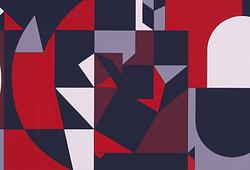Edvard Munch
"Vampire II" (Vampyr II)
Litografi och träsnitt tryckt i gråsvart, rött, grönt, blått och ockra, 1895-1902, signerad med blyerts. 38,7 x 55,6 cm, bladstorlek 52,7 x 61,3 cm.
Gulnad, missfärgad efter passepartout. Veck längs med bladets övre och nedre kanter, pappersförluster i hörnen.
Proveniens
Private Collection. Malmö, Sweden.
Litteratur
Woll 41. Schiefler 34.
Övrig information
"Vampire", as is the case with Munch's "Madonna", can also be traced to a painting with the same motive, and as an extra curiosity - "Vampire" was drawn on the backside of the lithographic stone used for "Madonna".
The first lithographic version was created in 1895, and so also the second, but it was not until 1902 that Edvard Munch made this to a highly refined combination print, with the use of both lithographic stone and wood blocks. By differentiating the inking, types of paper, and also naturally the combination of colours, Munch was able to recreate his numerous expressions and different moods. Earlier Munch had been experimenting by adding colour by hand to his various prints, and so clearly showing a wish to make the individual prints into unique works of art.
When the painting was first shown in Berlin in 1893, it was titled "Liebe und Schmerz" (Love and pain), and the change of title was likely due to the German-Polish writer Stanislaw Przybyszewski, who in 1894 described the motive as a broken man and against his neck a biting vampire face, "there is something frighteningly calm, dispassionate about this picture, a fatality of resignation that cannot be measured. The man rolls on and on into the abyss, unresisting, helpless, taking pleasure in the fact that he can roll just as unresistingly as a stone. Even so, he cannot rid himself of the vampire, nor rid himself of his pain, and the woman will always be sitting there and for ever be biting with a thousand serpent's tongues, a thousand poisoned fangs" (Arne Eggum: Edvard Munch. Livsfriesen fra maleri till grafikk, Oslo 1990, p. 174). Edvard Munch's own words where not at all as dramatic, he simply stated that, "Vampire is really what makes the picture literary - in reality, it is just a woman kissing a man on the back of the neck". Przybyszewski is a representative, as is Munch himself, for the time when the tense relationship between man and woman was frequently discussed and the pictorial art as well as the literary text often reflected men's feelings about the modern woman - the powerlessness they felt and how they feared she was hiding behind her sexuality.
The image is both beautiful and peaceful in a sense, but also frightening and violent, it radiates an enigmatic strength and tickles all our senses, it is one of Edvard Munch's most alluring and recognizable works of art.


























